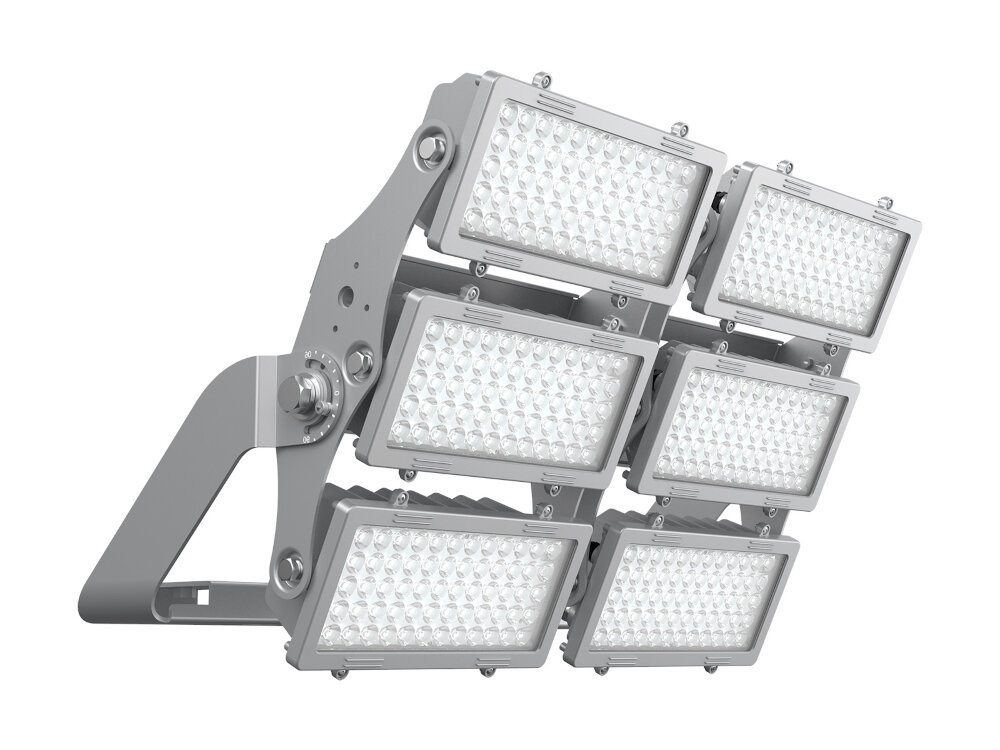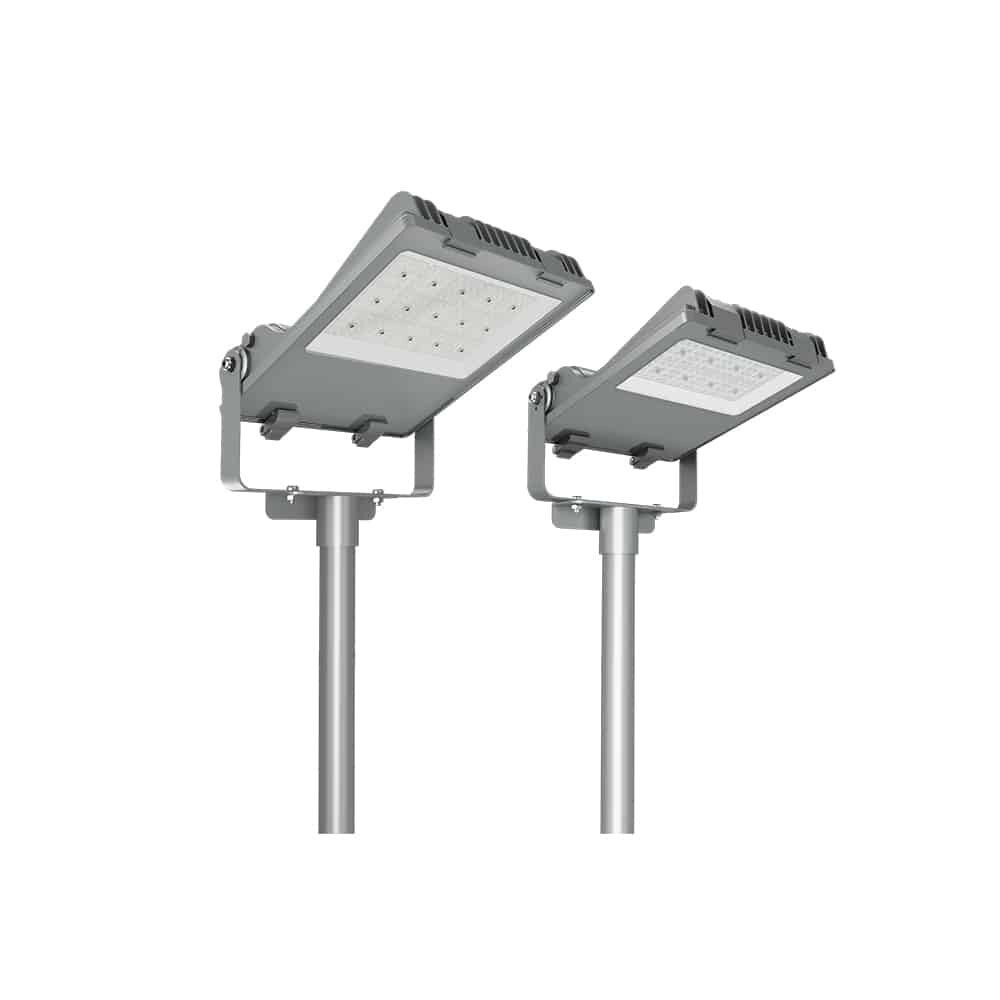How Many Amps Does a LED Light Bulb Use? A Comprehensive Guide

In today’s world, energy efficiency is becoming increasingly important. With concerns about climate change and the rising cost of electricity, many people are turning to LED light bulbs as a more efficient and cost-effective lighting solution. But, how many amps does a LED light bulb use? Understanding the electrical characteristics of LED light bulbs can help you make informed decisions when it comes to selecting the right bulb for your needs. LED light bulbs use significantly less electricity than traditional incandescent bulbs, making them a popular choice for those looking to reduce their energy consumption. However, determining the exact amount of amps used by a LED bulb can be a bit more complicated than simply looking at the wattage. In this comprehensive guide, we will explore the electrical properties of LED light bulbs, including how they are rated, how they work, and how to calculate their amperage. Whether you’re an electrician, a DIY enthusiast, or just someone looking to learn more about LED lighting, this guide will provide you with the information you need to make informed decisions about your lighting needs.
LED light bulbs, or Light Emitting Diode light bulbs, are a type of energy-efficient lighting that have become increasingly popular in recent years. Unlike traditional incandescent bulbs that use a filament to produce light, LED bulbs use semiconductors that convert electrical energy into light. This makes LED bulbs much more energy-efficient, as they use far less electricity to produce the same amount of light as incandescent bulbs. In addition, LED bulbs have a much longer lifespan than traditional bulbs, making them a cost-effective and environmentally friendly choice for lighting. LED bulbs are available in a wide range of colors and styles, making them a versatile option for any home or business.
LED light bulbs work by utilizing a semiconductor material that emits light when an electric current passes through it. The semiconductor is doped with impurities to create a p-n junction, which allows for the movement of electrons and holes. When voltage is applied to the p-n junction, electrons flow from the negatively charged region to the positively charged region, recombining with holes and releasing energy in the form of light. Unlike traditional incandescent bulbs, which use a filament that heats up and emits light, LED bulbs do not produce heat and are much more energy-efficient. Additionally, LED bulbs can be made in a variety of colors by using different semiconductor materials and doping techniques.
Knowing the amount of amps used by LED light bulbs is crucial in several ways. Firstly, it helps in determining the appropriate size of the circuit breaker or fuse required for the bulb’s installation. Secondly, it assists in ensuring the safety of the electrical system as using a bulb with high amperage can overload the circuit and cause a fire hazard. Thirdly, understanding the amps used by LED bulbs can help in selecting the right dimmer switch for the light fixture, ensuring smooth and efficient dimming. Moreover, it also helps in calculating the energy consumption and overall cost of using the LED bulb, making it easier to compare and choose between different lighting options. Therefore, having knowledge about the amount of amps used by LED light bulbs is essential for safety, efficiency, and cost-effectiveness.
Factors Affecting Amps Used by LED Light Bulbs

LED light bulbs are known for their energy efficiency and low power consumption. However, the amount of amps used by an LED light bulb is not fixed and can depend on several factors. One of the major factors that affect the amps used by LED light bulbs is their wattage. LED light bulbs with higher wattage will use more amps than those with lower wattage. Additionally, the brightness level of the LED light bulb also affects the amps used. The higher the brightness, the more amps the LED light bulb will use. Another factor that affects the amps used by LED light bulbs is the voltage of the power source. LED light bulbs require a specific voltage range, and if the voltage is too high or too low, it can affect the amps used. If the voltage is too high, it can cause the LED light bulb to draw more amps, which can be dangerous and cause the bulb to overheat. On the other hand, if the voltage is too low, the LED light bulb may not work at all, or it may not be as bright as it should be, and this can affect the amps used. Therefore, it is important to ensure that the voltage of the power source is within the specified range for the LED light bulb to work efficiently and use the correct amount of amps.
The wattage of an LED light bulb is a crucial factor to consider when buying a light bulb. It refers to the amount of power the bulb consumes to produce light. LED bulbs are known for their energy efficiency, and they consume significantly less power than traditional incandescent bulbs. The wattage of an LED bulb typically ranges from 2 watts to 20 watts, depending on the brightness level required. The lower the wattage, the less electricity the bulb consumes, resulting in lower energy bills. Additionally, LED bulbs have a longer lifespan than traditional bulbs, making them a cost-effective option in the long run. When shopping for LED bulbs, it’s essential to check the wattage to ensure it meets your lighting needs while consuming minimal electricity.
Voltage is an essential aspect of any electrical circuit, including LED light bulbs. It refers to the potential difference between two points in the circuit, which determines the flow of electric current. LED bulbs require a specific voltage range, usually between 2 and 3 volts, to function efficiently, and exceeding this range can result in damage to the bulb or the circuit. Therefore, it is vital to ensure that the voltage of the circuit matches the requirements of the LED bulb to ensure optimal performance and longevity. Additionally, understanding the voltage of the circuit can help in selecting the appropriate transformer or power supply to power the LED bulb safely and effectively.
LED light bulbs have become increasingly popular in recent years due to their energy efficiency, longevity, and versatility. There are several types of LED light bulbs available on the market, each with its unique characteristics and benefits. One of the most common types is the A19 LED bulb, which is designed to replace traditional incandescent bulbs. These bulbs are available in different color temperatures, ranging from warm white to cool white, and are suitable for use in a variety of settings, including homes, offices, and commercial spaces. Another popular type is the PAR LED bulb, which is commonly used in track lighting, recessed lighting, and outdoor fixtures. These bulbs are available in different beam angles, making them ideal for accent lighting and highlighting specific features. Overall, LED light bulbs offer a wide range of options for consumers, allowing them to choose the right bulb for their specific needs and preferences.
In addition to the amount of current that an LED light bulb consumes, its color temperature is also an important aspect to consider. Color temperature refers to the perceived warmth or coolness of the light emitted by the bulb, and is measured in Kelvin (K). Generally, LED light bulbs with a lower color temperature, around 2700K to 3000K, produce a warmer, more yellowish light that is similar to traditional incandescent bulbs. On the other hand, bulbs with a higher color temperature, around 4000K to 5000K, emit a cooler, bluish-white light that is often preferred for task lighting or in spaces where a more clinical or modern aesthetic is desired. It’s important to choose the right color temperature for your space to ensure a comfortable and functional lighting environment.
Calculating Amps Used by LED Light Bulbs

LED light bulbs are among the most energy-efficient lighting options available in the market today. When it comes to calculating the amps used by any LED light bulb, the process is relatively simple. A watt is the unit of power consumption for light bulbs, and the amps used by a bulb are calculated by dividing the wattage by the voltage. The voltage of most LED bulbs is 120 volts, which is the standard voltage for household electrical systems in the United States. So, for example, if you have an 8-watt LED bulb, the amps used would be calculated as follows: 8 watts divided by 120 volts equals 0.067 amps. This means that the bulb uses only 0.067 amps of electricity, making it an energy-efficient and cost-effective lighting option. It is important to note that the amps used by LED light bulbs can vary depending on their wattage and voltage. Additionally, the wiring in your home or business may affect the amount of amps used by your LED bulbs. If you are unsure about the electrical wiring in your home or business, it is recommended that you consult a licensed electrician to ensure that your LED bulbs are being used safely and efficiently. By calculating the amps used by your LED bulbs, you can make informed decisions about your energy consumption and save money on your electricity bills.
Ohm’s Law is a fundamental principle of electricity that helps to determine the relationship between voltage, current, and resistance in a circuit. When it comes to LED light bulbs, understanding Ohm’s Law can be useful in calculating the amount of current required to power them. The formula for Ohm’s Law is I = V/R, where I represents the current in amperes, V represents the voltage in volts, and R represents the resistance in ohms. By knowing the voltage and resistance of an LED light bulb, one can easily calculate the amount of current it requires to operate. This information can be helpful in determining the appropriate power source for a given LED light bulb, as well as in troubleshooting any issues that may arise during installation or operation.
Calculations are a crucial part of our everyday life, from measuring ingredients for cooking to calculating finances. In the context of LED light bulbs, there are several calculations that can be useful. One example is calculating the amperage of the LED light bulb, which can be done by dividing the wattage by the voltage. Another example is calculating the energy savings of using LED light bulbs compared to traditional incandescent bulbs, which can be done by comparing the wattage and lifespan of both types of bulbs. These calculations can help consumers make informed decisions about their lighting choices and save money on their energy bills.
Comparison of Amps Used by LED Light Bulbs and Incandescent Light Bulbs

When it comes to comparing the amps used by LED light bulbs and incandescent light bulbs, there is a significant difference between the two. LED light bulbs are designed to be energy-efficient, and as a result, they use significantly fewer amps than incandescent bulbs. For example, a typical 60-watt incandescent bulb will use around 0.5 amps of electricity, while a similar LED bulb will use only around 0.1 amps. This means that LED bulbs can be up to 80% more efficient than traditional incandescent bulbs, resulting in significant savings on your energy bills. In addition to being more energy-efficient, LED bulbs also have a much longer lifespan compared to incandescent bulbs. While a typical incandescent bulb will last for around 1,000 hours, an LED bulb can last for up to 50,000 hours or more. This means that you will need to replace your LED bulbs far less frequently than incandescent bulbs, resulting in further savings over time. LED bulbs also produce less heat than incandescent bulbs, which means that they are safer to use and can help to reduce your cooling costs during the summer months. Overall, if you are looking for an energy-efficient and cost-effective lighting solution, LED bulbs are a great choice.
Energy consumption varies significantly across different types of light bulbs. LED light bulbs use significantly less energy than incandescent bulbs, which are notorious for their high energy consumption. This is because LED bulbs convert most of the energy they consume into light, rather than waste heat, which is the case with incandescent bulbs. Additionally, LED bulbs are highly efficient, meaning they can produce a high amount of light output with minimal energy input. This is why LED bulbs have become increasingly popular in recent years, as they are not only more energy-efficient but also have a longer lifespan compared to traditional bulbs.
One of the biggest advantages of using LED light bulbs is the cost savings they offer over traditional incandescent bulbs. This is because LED bulbs use significantly less energy to produce the same amount of light, which translates into lower electricity bills. In fact, LED bulbs are known to be up to 80% more energy-efficient than incandescent bulbs. Additionally, LED bulbs last much longer than incandescent bulbs, which means that you’ll save money on replacement costs over time. While LED bulbs may initially be more expensive than traditional bulbs, their long lifespan and energy efficiency make them a cost-effective choice in the long run.
Understanding the amount of amps used by LED light bulbs is crucial for several reasons. Firstly, it helps in determining the compatibility of the bulb with the fixture and the wiring of the circuit. Secondly, knowing the amps used by the LED bulb can assist in calculating the total wattage of the circuit and avoiding overloading it. Moreover, it helps in selecting the appropriate power supply unit for the LED bulb, thereby ensuring its optimal performance and longevity. Additionally, understanding the amps used by LED bulbs can help in making informed decisions about energy consumption and cost savings. Therefore, having a comprehensive knowledge of the amps used by LED bulbs can aid in making smart and sustainable lighting choices.
LED light bulbs have become increasingly popular due to their numerous benefits. They are energy-efficient, using up to 80% less energy than traditional incandescent bulbs, leading to significant cost savings on electricity bills. Additionally, they are long-lasting, with a lifespan of up to 25,000 hours, reducing the need for frequent replacements. LED bulbs are also environmentally friendly, emitting less heat and carbon dioxide, making them a greener option. They are also versatile, with a range of colors and styles available, making them suitable for a variety of settings. Overall, the benefits of using LED light bulbs make them an excellent choice for those looking to save money, reduce their environmental footprint, and enjoy a high-quality lighting experience.
In conclusion, understanding the amperage of LED light bulbs is crucial when choosing the right lighting for your space. LED lights are much more energy-efficient than traditional incandescent bulbs, and they use a fraction of the electricity. This means that you can use more bulbs in your home without worrying about your energy bill skyrocketing. However, it’s essential to note that the amperage of LED bulbs varies depending on their wattage and voltage. Therefore, it’s crucial to check the manufacturer’s specifications before purchasing any LED bulb. Lastly, for effective and efficient lighting, always ensure that you use high-quality LED bulbs that are compatible with your lighting fixtures.
Conclusion

In conclusion, understanding the amperage of an LED light bulb is crucial for efficient and safe use. As we have seen in this comprehensive guide, factors such as voltage, wattage, and resistance play a significant role in determining the amperage of an LED bulb. It is important to note that the amperage of an LED bulb varies depending on its size, brightness, and intended use. Therefore, it is essential to consult the manufacturer’s specifications before purchasing an LED bulb to ensure that it is compatible with your electrical system. It is also imperative to use LED bulbs that are certified and meet safety standards to avoid electrical hazards. With this knowledge, you can confidently choose the right LED bulb and enjoy its energy efficiency and durability while keeping your home or workplace well-lit.




